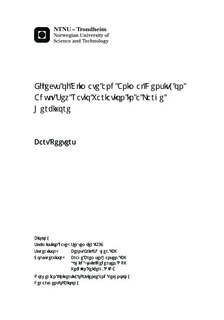Effects of Climate and Animal Density on Adult Sex Ratio Variation in a Large Herbivore
Master thesis
Permanent lenke
http://hdl.handle.net/11250/2351459Utgivelsesdato
2014Metadata
Vis full innførselSamlinger
- Institutt for biologi [2575]
Sammendrag
Adult sex ratio is often biased in natural populations, and its variation is known to influence different demographic components at the population level. The causes of variation in adult sex ratio remain, however, poorly understood. Using time series from 1979 to 2013, I investigated sex-specific adult population growth rates and mortality indices (based on carcass counts) of Svalbard reindeer (Rangifer tarandus platyrhynchus) to explain variation in adult sex ratio in response to climate variability and animal density. Food limitation due to harsh winter conditions and high animal density was expected to have a stronger effect on males relative to females due to a higher energy requirement related to body size and reproductive strategy. Accordingly, when accounting for the delayed effect of population-level fecundity (i.e. input from new cohorts) and the positive effect of summer temperature (directly determining vascular plant biomass), I found that increased winter precipitation (i.e. reduced forage accessibility) had a stronger negative effect on adult population growth rate in males than in females. Additionally, the mortality index increased more strongly in response to increased winter precipitation in males than in females. Increased winter precipitation, therefore, lead to a more female-biased ASR. High animal density, however, had a stronger negative effect on female adult population growth rate and increased the mortality index more strongly in females than in males, which could be related to sex-differences in density-dependent age structure. The present study is the first to demonstrate the effects of climate variability and animal density on adult sex ratio variation in an Arctic ungulate, which has important implications for management and harvest regimes of populations facing climate change.
